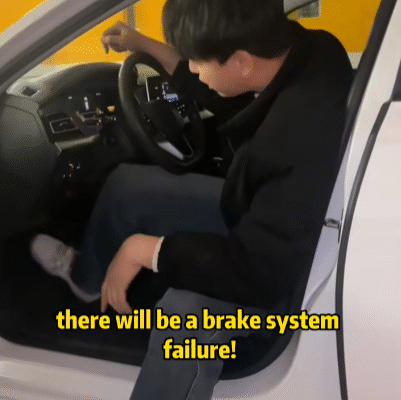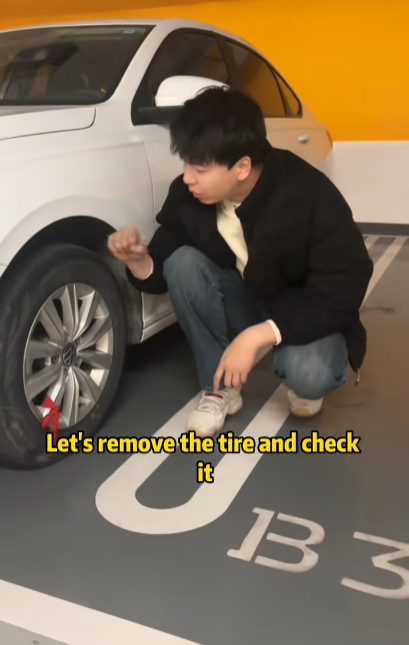
When the brake fault light on your car’s dashboard illuminates, it’s more than just a warning—it’s a call for immediate attention. The braking system is one of the most critical safety components of any vehicle. Ignoring this warning could put you and other road users at risk. Whether you’re driving a modern car equipped with advanced warning systems or an older model with a basic brake indicator, knowing what steps to take when this light appears can save you from serious accidents and expensive repairs.
Understanding the Brake Fault Light
The brake warning light, often depicted as a circle with an exclamation mark or the word “BRAKE,” serves as a safety indicator. It typically illuminates in the following scenarios:
- Low Brake Fluid: This is one of the most common reasons. Brake fluid levels drop naturally as brake pads wear down, but significant drops could indicate leaks or other serious issues.
- Worn Brake Pads: Many modern vehicles have sensors that trigger the brake warning light when pads are too thin.
- Parking Brake Engaged: Sometimes the light is simply reminding you that the parking brake is still on.
- ABS (Anti-lock Braking System) Issues: Some cars use the same light or a similar one to indicate problems with the ABS.
- Hydraulic System Malfunctions: Any failure in the brake lines or master cylinder could cause this warning to activate.
- Electrical Faults: Occasionally, a faulty sensor or wiring issue can trigger the light.
Knowing the cause is crucial, but regardless of why the light comes on, you must not ignore it.
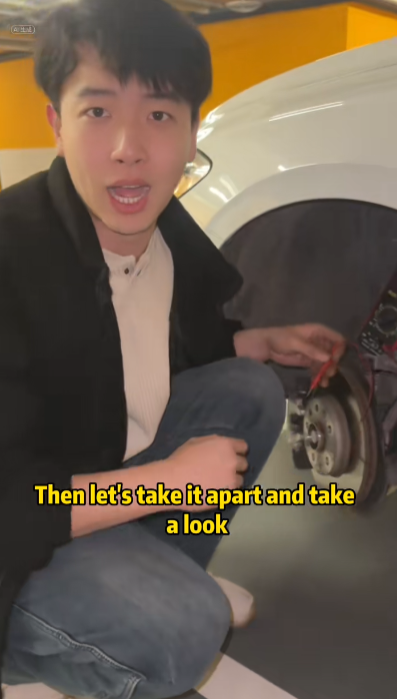
Immediate Actions When the Brake Fault Light Comes On
- Check if the Parking Brake is Engaged
The simplest reason for a brake warning light is an engaged parking brake. Check that it is fully released. Even if the lever or button feels disengaged, some cars are sensitive to partial engagement. - Pull Over Safely
If you notice the light while driving, don’t panic. Look for a safe place to pull over, such as a parking lot or roadside rest area. Never stop abruptly on a busy highway unless absolutely necessary. - Check Brake Fluid Levels
Once parked, open the hood and locate the brake fluid reservoir. If the fluid is below the “MIN” mark, you may have a leak or severely worn brake pads. Top up the brake fluid with the correct type (usually DOT3, DOT4, or DOT5, as specified in your owner’s manual), but understand that this is only a temporary measure. A sudden drop in brake fluid signals a deeper problem that needs professional inspection. - Listen and Feel for Changes
Test the brakes at low speed. Are they making grinding noises? Does the pedal feel “spongy,” soft, or sink to the floor? These are signs of brake failure. If you notice any of these symptoms, avoid driving and call for roadside assistance. - Check for Warning Messages
Many modern cars have a digital display that provides more information about the problem. Look for messages like “Brake fluid low,” “Check brake pads,” or “ABS malfunction.”
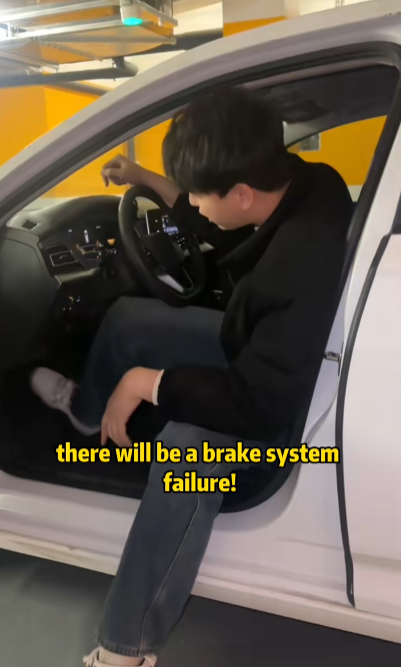
Can You Continue Driving?
Whether you can continue driving depends on the severity of the issue:
- Safe to Drive Temporarily:
If the light is on because of a minor issue (like low brake fluid but the brakes still feel strong), you might drive a short distance to the nearest garage. Keep speeds low and maintain a safe distance from other vehicles. - Not Safe to Drive:
If you feel the brakes are weak, the pedal sinks, or there’s a grinding noise, stop driving immediately. Continuing to drive with failing brakes is extremely dangerous.
What to Do If You Lose Braking Power While Driving
Although rare, brake failure can happen, especially if the warning light was ignored. If you lose braking power:
- Stay Calm: Panic can make the situation worse.
- Downshift: If you’re driving a manual or automatic with manual mode, downshift to lower gears to slow the car.
- Use the Parking Brake Carefully: Pull the parking brake gently, not abruptly, as this can cause skidding.
- Find an Escape Route: Steer toward an open area, grassy field, or roadside barrier if needed.
- Use the Horn and Hazard Lights: Alert other drivers as you bring the vehicle to a stop.

Preventive Maintenance for Brake Systems
The best way to avoid a sudden brake fault light is through regular maintenance. Here’s how you can keep your brakes in top shape:
- Check Brake Fluid Regularly:
At least once every few months, check the brake fluid level. If you notice it dropping too quickly, consult a mechanic immediately. - Replace Brake Pads and Rotors as Needed:
Don’t wait for squealing noises or warning lights to replace pads. Worn pads not only trigger the brake light but also damage rotors, leading to more expensive repairs. - Inspect for Leaks:
Have your mechanic check for brake fluid leaks during routine oil changes or servicing. - Bleed the Brake Lines:
Over time, air bubbles can form in brake lines, reducing braking efficiency. Flushing and bleeding the brake system as recommended in your owner’s manual is essential. - Monitor ABS Components:
If your car is equipped with ABS, ensure sensors and electronic modules are checked regularly. - Pay Attention to Dashboard Warnings:
Never ignore any warning lights, especially those related to braking. Even if you suspect a sensor malfunction, have it inspected.
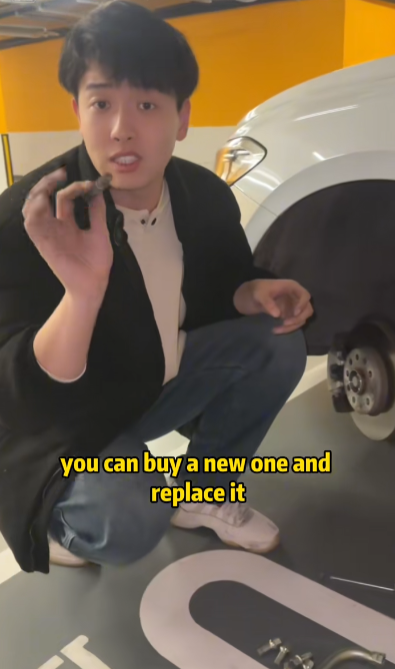
When to Seek Professional Help
Any time the brake fault light stays on after checking basic issues like the parking brake or fluid levels, you need to visit a qualified mechanic. Professional diagnostic tools can pinpoint the exact cause, whether it’s a failing master cylinder, ABS module malfunction, or worn-out brake components.
Signs you need immediate professional help:
- The brake light is flashing or comes on while driving.
- You feel vibrations or hear grinding noises when braking.
- Brake fluid keeps dropping even after topping up.
- Brake pedal feels unusually hard or soft.
Final Thoughts
A car’s braking system is its most critical safety feature, and the brake fault light is your early warning system. When it appears, treat it as an urgent signal—not an inconvenience. By stopping safely, checking brake fluid levels, and seeking professional help when necessary, you can avoid dangerous situations and costly repairs.
The best defense against brake failures is regular maintenance and prompt attention to warning signs. Remember: it’s always better to pull over and check than to risk losing braking power at high speed. Being proactive and prepared can save lives—including your own.
